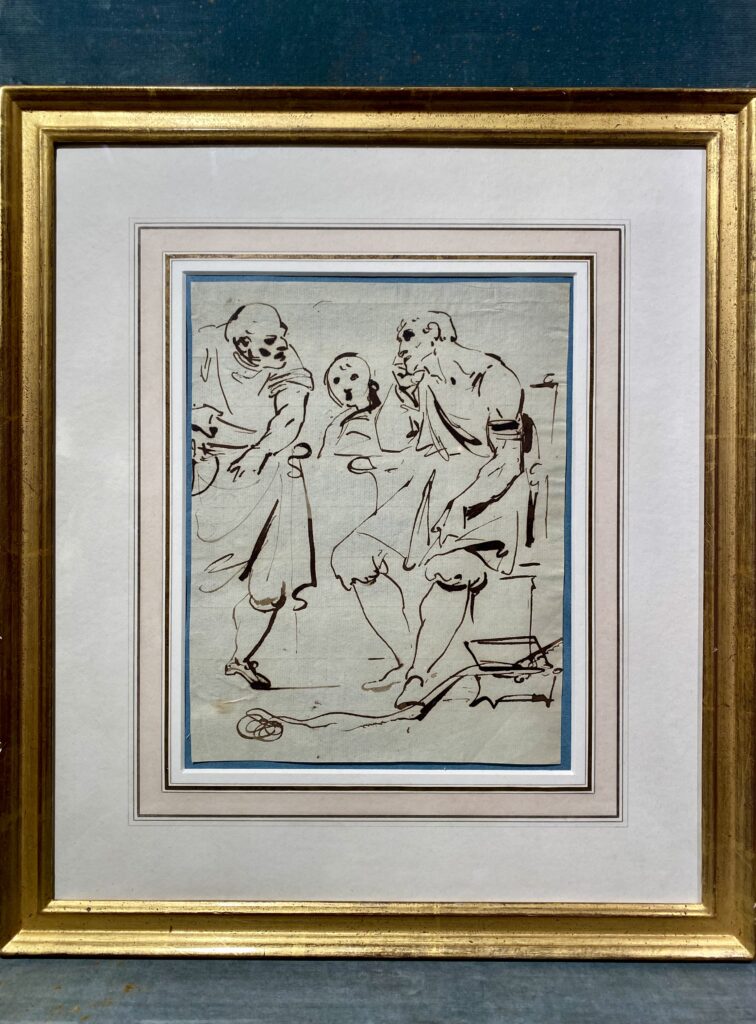William Lock the Younger
1767 - 1847
One Man Threatening another with a Knife; an Onlooker aghast (The Death of Brutus?)

Medium:
Pen & Ink on Paper
Category:
Dimensions:
25.5(h) x 30(w) cms
Framed Dimensions:
45(h) x 39.5(w) cms
Essay:
This sketch came from an album of 44 drawings by William Lock (or Locke), some of which are inscribed with dates from the 1780s. Many of these sketches depict scenes from classical mythology, history or the theatre. The album remained in the family of William Gilpin, an early tutor of Lock and a family friend, until the early 2010s.
William Lock the Younger was a draughtsman of the early Romantic school working in the circle of Henry Fuseli in Rome and London. He was the eldest son of the noted collector and connoisseur William Lock of Norbury, a patron of George Barret, Thomas Lawrence, Richard Wilson and Henry Fuseli. The young Lock became a close friend and protégé of Henry Fuseli and took lessons from him. Indeed, the latter was a frequent visitor to the Lock family home Norbury Park in Surrey and dedicated his lectures on painting to his promising young pupil.
The elder Lock was a true patron of the arts in England and built Norbury in 1774. It was designed by Thomas Sandby and decorated with murals by George Barret. Gilpin dedicated his "Three Essays on Picturesque Beauty; on Picturesque Travel; and on Sketching Landscape" to Lock, with the acknowledgement that 'the best remarks and observations in them are yours'.
Lock the Younger married the celebrated beauty Elizabeth Jennings. They had a son William (1804-1832), himself a talented artist, who tragically drowned in Lake Como. There was also a daughter, Elizabeth, who went on to marry Joseph 13th Lord Wallscourt. Lock sold the Norbury Estate in 1819 and spent the remainder of his life in Rome and Paris, respectively. He died in 1847 and was buried at Mickleham. It is recorded that Sir Horace Walpole was a great admirer of Lock's drawings, most of which are uniform in style and in the general approach to their historical, mythological, biblical and Shakespearean subjects. One such work, 'The Last Moments of Cardinal Wolsey,' was engraved in stipple by Charles Knight.
Provenance:
By descent in the family of Rev. William Gilpin (1724-1804)
Literature:
The Duchess of Sermonetta, The Locks of Norbury, published 1940.
Nancy C. Pressly: The Fuseli Circle in Rome: Early Romantic Art of the 1770s, exh. cat., New Haven, Yale Centre for British Art, Sept - Nov 1979, p. 116.